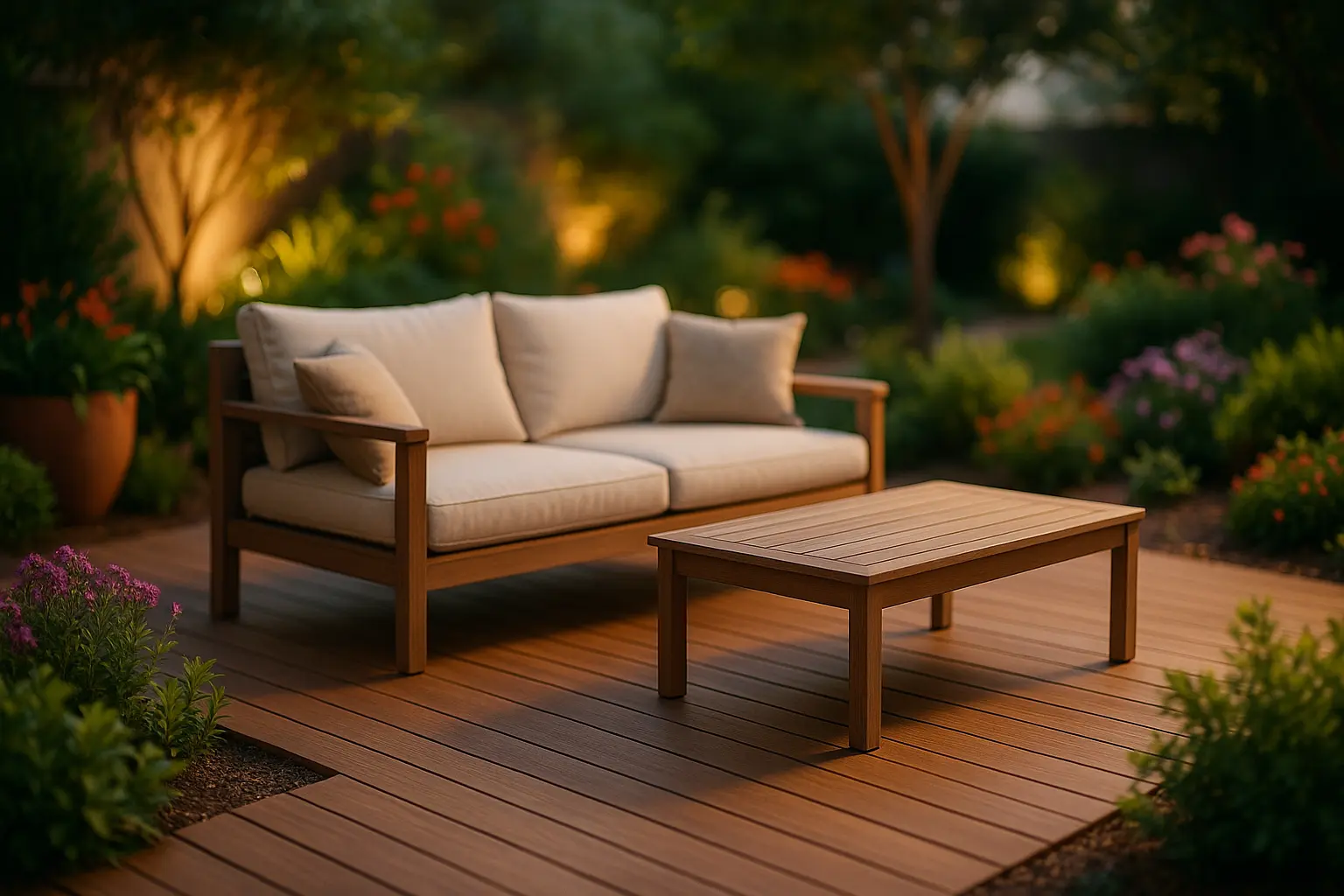In an era where the indoor merges seamlessly with the outdoor, crafting your personal outdoor oasis has become a quintessential aspect of modern living. Designing exterior decks and outdoor living spaces is more than a mere extension of your home. It’s about creating a harmonious balance between natural beauty and functional design, where every element speaks to your unique style and needs.
As more of us seek solace in our gardens and yards, the art of outdoor design has evolved into a sophisticated discipline. From selecting the right materials to integrating seamless lighting, the journey requires careful consideration and meticulous planning. Whether you envision a cozy nook for intimate gatherings or a sprawling space for grand celebrations, the possibilities are endless.
Embark on this creative venture with us as we navigate the many considerations and challenges that come with designing your perfect deck or living area.
Choosing the Right Materials: The Foundation of Your Outdoor Space
Selecting the appropriate materials is pivotal to the success of your outdoor design project. Your choices will not only define the aesthetic of your deck but also determine its longevity and functionality. The material you select should reflect both your personal style and the unique demands of your local climate.
Embracing Wood: Timeless Elegance
Wood remains a popular choice for decking, offering a classic and inviting aesthetic. Natural woods like cedar and redwood boast rich colors and textures, exuding a timeless charm that complements any outdoor space. These materials are naturally resistant to decay and insects, ensuring durability with proper maintenance.
Venturing into Composites: Modern Innovation
For those seeking a low-maintenance alternative, composite materials offer an innovative solution. This blend of wood fibers and recycled plastics is engineered to resist the wear and tear of the elements, requiring less upkeep while maintaining a sophisticated appearance.
Incorporating Metal: Industrial Appeal
Metal components, such as steel or aluminum, can add an industrial edge to your design. When used strategically, they provide contrast and visual interest, offering a sleek and modern twist to your exterior deck. Consider using metal railings or furniture for a bold statement.
Incorporating thoughtfully selected materials into your design will lay a strong foundation for your outdoor living area, ensuring it remains a cherished retreat for years to come.
Lighting Up Your Outdoor Ambiance: Crafting the Perfect Atmosphere
When the sun dips below the horizon, thoughtfully curated lighting transforms your outdoor space into an enchanting sanctuary. The right fixtures and placements can enhance safety, highlight architectural elements, and create an inviting atmosphere that beckons you and your guests to linger longer.
Layering Light for Depth
A well-illuminated outdoor area involves multiple layers of light, each serving a unique purpose. Start with ambient lighting, such as overhead fixtures or string lights, to provide general illumination. Add task lighting for specific activities like grilling or reading. Accent lighting can then be used to highlight focal points, such as a water feature or garden sculpture.
Embracing Solar Solutions
Incorporating solar-powered elements is an eco-friendly way to illuminate your space. Solar lights charge during the day and automatically activate at dusk, offering a sustainable and cost-effective lighting solution. They work exceptionally well along pathways and around decking areas.
The Magical Glow of Fire
A fire pit or outdoor fireplace introduces a warm and inviting glow, fostering an intimate ambiance perfect for chilly evenings. The dancing flames provide both light and heat, encouraging gatherings and conversations to continue long after sunset.
Careful consideration of lighting can elevate your outdoor living space, turning it into a stunning extension of your home where moments are illuminated and memories are made.
Harmonizing Indoor and Outdoor Spaces: Creating Seamless Transitions
The trend of blending indoor and outdoor spaces reflects a desire for harmonious living environments that blur the boundaries between inside and out. By designing a seamless transition, you create a fluid flow that enhances the usability and aesthetic of your home.
Opening Doors to Possibilities
Large doors that fold or slide open can establish an uninterrupted connection between your living room and deck. Choose materials and styles that complement both areas, ensuring a cohesive look. Consider bi-fold or accordion doors that offer the flexibility of a wide opening, inviting the outdoors in.
Unifying Design Elements
To achieve a harmonious transition, carry design elements from inside to the outside. Coordinating colors, textures, and materials across both areas can create a visual link. For example, use the same flooring material or a similar color palette for a cohesive feel.
Functional Furniture Arrangements
Arrange furniture to encourage interaction between the spaces. A well-placed sofa or dining set that faces the doors can visually connect the two areas, inviting people to drift effortlessly between them.
Seamlessly integrating your outdoor space with your home’s interior maximizes your living areas, offering a versatile haven where nature and comfort converge.
Designing exterior decks and outdoor living spaces is an exciting opportunity to extend your home’s personality into the outdoors. With the right blend of thoughtful planning, imaginative design, and quality materials, you can craft a space that enhances your lifestyle and reflects your individual taste.
As you embark on this creative journey, remember to consider each element carefully. Whether it’s choosing the perfect lighting, selecting durable materials, or harmonizing indoor and outdoor areas, every decision plays a crucial role in bringing your dream to life.
Ultimately, your deck and outdoor area should become an extension of your home—a place where you can relax, entertain, and create lasting memories. Embrace the challenges of designing your outdoor space and transform it into a captivating retreat that resonates with your spirit.
FAQ
What are the primary challenges in designing an outdoor deck?
Designing an outdoor deck involves several challenges, including selecting weather-resistant materials, ensuring structural stability, and balancing aesthetics with functionality. It’s also crucial to consider the local climate and how it may impact the materials and design.
How do you choose the right materials for an exterior deck?
Selecting suitable materials requires considering factors such as durability, maintenance, cost, and environmental impact. Common choices include pressure-treated wood, composite decking, and natural hardwoods. Each material has its own advantages and disadvantages, so it’s essential to assess what aligns with your needs and preferences.
What role does climate play in designing outdoor living spaces?
Climate significantly influences the design of outdoor living spaces. For instance, in areas with heavy rainfall, choosing water-resistant materials and ensuring proper drainage is crucial. In contrast, regions with intense sunlight might require shade solutions to keep the space comfortable.
How can one ensure safety in exterior deck design?
Ensuring safety involves adhering to local building codes and regulations, installing sturdy railings, and using non-slip surfaces. Regular maintenance, like checking for loose boards or nails and cleaning away debris, also plays a vital role in keeping the area safe for use.
What are some design tips for maximizing small outdoor spaces?
To maximize small outdoor spaces, consider multi-functional furniture, vertical gardening, and built-in seating. Creating distinct zones, using light colors, and incorporating mirrors can also help make the area feel more spacious.


